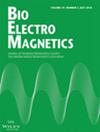下载PDF
{"title":"Dosimetric Electromagnetic Safety of People With Implants: A Neglected Population?","authors":"Lena Kranold, Jingtian Xi, Tolga Goren, Niels Kuster","doi":"10.1002/bem.70023","DOIUrl":null,"url":null,"abstract":"<p>Electromagnetic (EM) safety guidelines are designed to protect the general public and workers from the risks posed by exposure to EM sources of all types, with the exception of medical EM sources. However, it has never been systematically evaluated whether individuals with conductive implants are also protected by these guidelines or whether the local field enhancement due to presence of the implant may pose an unacceptable risk under certain realistic exposure conditions. To address this important knowledge and regulatory gap, we first evaluated the upper bound of the local enhancement of bare and insulated generic implants of 0.5 <i>λ</i> (approximately equal to resonant) and 0.1 <i>λ</i> lengths, but restricted the maximum length to 2 m, as a function of tissue properties and frequency (10 kHz to 1 GHz). Results for uniform electric field excitation showed local enhancement of psSAR<sub>10mg</sub> and of locally averaged E-field, respectively, compared to the background in the presence of a generic implant of 10 dB (1 GHz) to over 100 dB at frequencies under 100 MHz. In the next step, we tested the hypothesis that fields induced inside the human body by realistic near-field sources are not sufficiently uniform to generate results in enhancement that could pose unacceptable risk. Common implant trajectories were inserted into the Virtual Population human anatomical model Ella V3.0, and the model was exposed to the following conditions (i) a standard source representing a wireless power transfer source operating at 85 kHz and (ii) a dipole source that operates at 450 MHz within the current exposure limits. Results show that the safety limit is exceeded at the tip of the implant by a factor of <i>> </i>10 ( > 20 dB) or <i>> </i>115 V/m at 85 kHz, whereas the locally induced specific absorption rate averaged over 10 mg at 450 MHz was 7.9 W/kg, resulting in a temperature increase after 6 min of <i>< </i>0.4 K. Hence, as the hypothesis was falsified at frequencies <i>< </i>450 MHz, patients with implants are inadequately protected by current safety and product guidelines. In the discussions, proposals for how to close this regulatory gap are provided. Bioelectromagnetics. 00:00–00, 2025. © 2025 Bioelectromagnetics Society.</p>","PeriodicalId":8956,"journal":{"name":"Bioelectromagnetics","volume":"46 6","pages":""},"PeriodicalIF":1.2000,"publicationDate":"2025-09-25","publicationTypes":"Journal Article","fieldsOfStudy":null,"isOpenAccess":false,"openAccessPdf":"https://onlinelibrary.wiley.com/doi/epdf/10.1002/bem.70023","citationCount":"0","resultStr":null,"platform":"Semanticscholar","paperid":null,"PeriodicalName":"Bioelectromagnetics","FirstCategoryId":"99","ListUrlMain":"https://onlinelibrary.wiley.com/doi/10.1002/bem.70023","RegionNum":3,"RegionCategory":"生物学","ArticlePicture":[],"TitleCN":null,"AbstractTextCN":null,"PMCID":null,"EPubDate":"","PubModel":"","JCR":"Q3","JCRName":"BIOLOGY","Score":null,"Total":0}
引用次数: 0
引用
批量引用
Abstract
Electromagnetic (EM) safety guidelines are designed to protect the general public and workers from the risks posed by exposure to EM sources of all types, with the exception of medical EM sources. However, it has never been systematically evaluated whether individuals with conductive implants are also protected by these guidelines or whether the local field enhancement due to presence of the implant may pose an unacceptable risk under certain realistic exposure conditions. To address this important knowledge and regulatory gap, we first evaluated the upper bound of the local enhancement of bare and insulated generic implants of 0.5 λ (approximately equal to resonant) and 0.1 λ lengths, but restricted the maximum length to 2 m, as a function of tissue properties and frequency (10 kHz to 1 GHz). Results for uniform electric field excitation showed local enhancement of psSAR10mg and of locally averaged E-field, respectively, compared to the background in the presence of a generic implant of 10 dB (1 GHz) to over 100 dB at frequencies under 100 MHz. In the next step, we tested the hypothesis that fields induced inside the human body by realistic near-field sources are not sufficiently uniform to generate results in enhancement that could pose unacceptable risk. Common implant trajectories were inserted into the Virtual Population human anatomical model Ella V3.0, and the model was exposed to the following conditions (i) a standard source representing a wireless power transfer source operating at 85 kHz and (ii) a dipole source that operates at 450 MHz within the current exposure limits. Results show that the safety limit is exceeded at the tip of the implant by a factor of > 10 ( > 20 dB) or > 115 V/m at 85 kHz, whereas the locally induced specific absorption rate averaged over 10 mg at 450 MHz was 7.9 W/kg, resulting in a temperature increase after 6 min of < 0.4 K. Hence, as the hypothesis was falsified at frequencies < 450 MHz, patients with implants are inadequately protected by current safety and product guidelines. In the discussions, proposals for how to close this regulatory gap are provided. Bioelectromagnetics. 00:00–00, 2025. © 2025 Bioelectromagnetics Society.
人体植入物的剂量学电磁安全:一个被忽视的人群?
电磁(EM)安全指南旨在保护公众和工作人员免受暴露于所有类型电磁源(医疗电磁源除外)所造成的风险。然而,从未系统地评估过使用导电植入物的个体是否也受到这些指南的保护,或者在某些现实暴露条件下,由于植入物的存在而导致的局部场增强是否会造成不可接受的风险。为了解决这一重要的知识和监管空白,我们首先评估了裸和绝缘通用植入物的局部增强的上界,0.5 λ(大约等于谐振)和0.1 λ长度,但将最大长度限制为2 m,作为组织特性和频率(10 kHz至1 GHz)的函数。均匀电场激励的结果显示,在100mhz频率下,与普通植入物10db (1ghz)到100db以上的背景相比,psSAR10mg和局部平均电场分别有局部增强。在下一步中,我们测试了一个假设,即由现实的近场光源在人体内诱导的场不够均匀,无法产生可能造成不可接受风险的增强结果。将常见的植入物轨迹插入到虚拟种群人体解剖模型Ella V3.0中,并将模型暴露在以下条件下(i)工作频率为85 kHz的无线电源传输源的标准源和(ii)在当前暴露限值内工作频率为450 MHz的偶极子源。结果表明,在85 kHz时,植入物的尖端超过了安全极限>; 10 (> 20 dB)或>; 115 V/m,而在450 MHz时,超过10 mg的局部诱导比吸收率平均为7.9 W/kg,导致0.4 K作用6 min后温度升高。因此,由于该假设在450mhz频率下被证伪,植入物的患者没有得到现行安全和产品指南的充分保护。在讨论中,提出了如何缩小这一监管差距的建议。生物电磁学。00:00 - 00,2025。©2025生物电磁学学会。
本文章由计算机程序翻译,如有差异,请以英文原文为准。


 求助内容:
求助内容: 应助结果提醒方式:
应助结果提醒方式:


